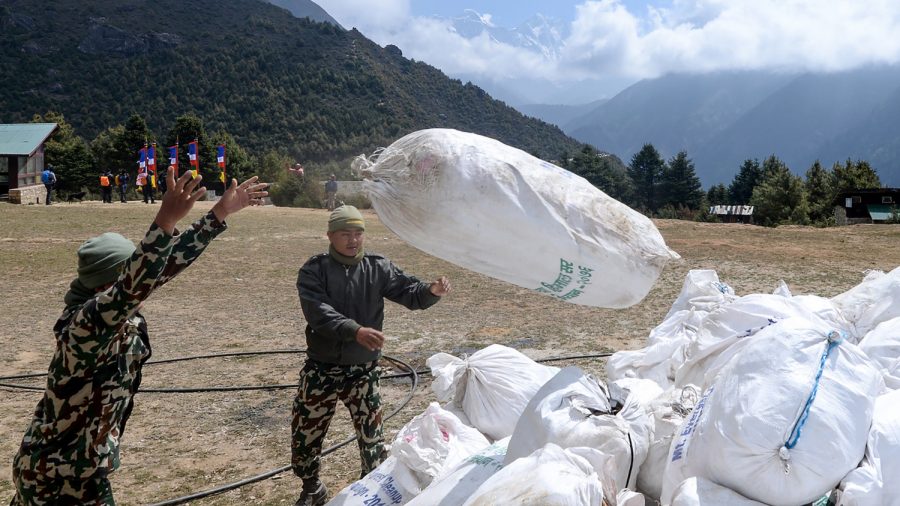A cleanup crew has pulled off four dead bodies and 24,200 pounds (11,000 kilos) of trash from Mount Everest over a span of 45 days, according to Nepalese government officials.
The cleaners spent weeks picking up “food wrappings, cans, bottles and empty oxygen cylinders” from Everest base camp, according to The Times of India.
Helicopters then flew the trash out to Kathmandu, according to The Associated Press.
Nepali officials recently found 4 bodies on Mt. Everest while cleaning up 24,000 pounds of trash left behind pic.twitter.com/2JAqsffqXY
— NowThis (@nowthisnews) June 7, 2019
“Some of the garbage was handed over to the NGO ‘Blue Waste to Value,’ which recycles waste products,” Bigyan Dev Pandey, a spokesperson for the Nepal Army, told The Times of India. He added that it coincided with World Environment Day.
Since 1953, when Edmund Hillary and Tenzing Norgay first successfully scaled the world’s tallest mountain, several hundred people set out each year in pursuit of the “Dream of Everest.”

However, with so many climbers, there is an increase in trash left behind and longer waiting times, which increases the risk of death.
Pandey told The Times of India that among the four dead bodies recovered, one included “that of a Russian mountaineer and a Nepali climber.” The other two are as-yet unidentified, he added.
With 11 reported deaths in 2019, this year has been Everest’s deadliest since 2015, according to CBS News. The most dangerous part of the trek is the so-called “Death Zone,” above 26,247 feet (8,000 meters), where conditions are too hazardous for humans to survive for long, according to CNN.
The matter gained international attention after a mountaineer named Rohtash Khileri posted videos on Instagram, showing a long line of people in the frigid cold waiting for their ascension.
Another mountaineer, Robin Haynes Fisher from the UK, expressed his concerns about the imminent dangers of too many people making the trek on his Instagram page.
“With a single route to the summit, delays caused by overcrowding could prove fatal so I am hopeful my decision to go for the 25th will mean fewer people. Unless of course, everyone else plays the same waiting game,” he wrote on May 19.
However, while he did successfully scale Everest on the 25th, Fisher never made it back.
The 44-year-old collapsed and died on the descent from the summit in the low-oxygen “death zone” area, according to USA Today.
Other climbers say the rise in the death toll is a result of inexperience.
“You have to qualify to do the Ironman,” Alan Arnette told The New York Times. “But you don’t have to qualify to climb the highest mountain in the world? What’s wrong with this picture?”

“This is not going to improve,” guide Lukas Furtenbach told the The New York Times. He added that he recently relocated his climbers to the Chinese side of Everest because of overcrowding in Nepal.
“There’s a lot of corruption in the Nepali government,” he said. “They take whatever they can get.”
This year Nepal issued 381 climbing permits, a record high, despite complaints about safety issues, according to multiple reports.
Victor Westerkamp contributed to this report.


